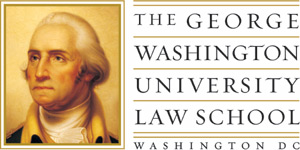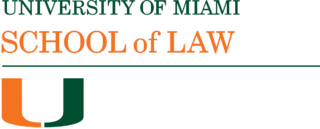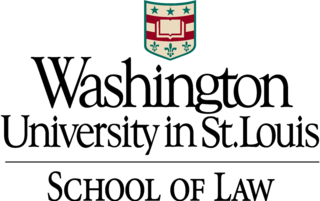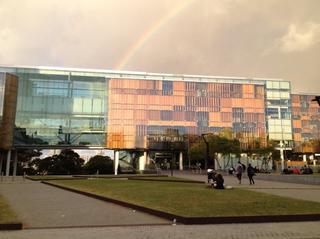
The University of New South Wales(UNSW), also known as UNSW Sydney, is a public research university based in Sydney, New South Wales, Australia. It is one of the founding members of Group of Eight, a coalition of Australian research-intensive universities.

Legal education is the education of individuals in the principles, practices, and theory of law. It may be undertaken for several reasons, including to provide the knowledge and skills necessary for admission to legal practice in a particular jurisdiction, to provide a greater breadth of knowledge to those working in other professions such as politics or business, to provide current lawyers with advanced training or greater specialisation, or to update lawyers on recent developments in the law.
The University of Toronto Faculty of Law is the law school of the University of Toronto. The Faculty's admissions process is the most selective of law schools in Canada and is one of the most selective in North America. The Faculty has consistently been ranked as the top law school for Common Law in Canada by Maclean's since it began to publish law school rankings. The Faculty offers the JD, LLM, SJD, MSL, and GPLLM degrees in law.

The West Bengal National University of Juridical Sciences is a premier public law school in India, and is a National law University located in Salt Lake City of Kolkata, West Bengal, India. In 2021, it was ranked 4th among law colleges in India by National Institutional Ranking Framework, and 2nd by India Today.

The George Washington University Law School is the law school of George Washington University, in Washington, D.C. Established in 1865, GW Law is the oldest top law school in the national capital. GW Law boasts the nation's largest course offerings with 275 elective courses in business and finance law, environmental law, government procurement law, intellectual property law, international comparative law, litigation and dispute resolution, and national security and U.S. foreign relations law. Admissions are highly selective as the law school receives thousands of applications. In 2019, the acceptance rate was 34%.

The University of Miami School of Law is the law school of the University of Miami in Coral Gables, Florida. Founded in 1926, it is the oldest law school in South Florida, graduating its first class of 13 students in 1929.

The University of Alberta Faculty of Law is the graduate school of law of the University of Alberta in Edmonton, Alberta, Canada. Established as an undergraduate faculty in 1912 it is the third oldest law school in Canada, and often considered the oldest law school in Western Canada.
Monash University Faculty of Law, or Monash Law School, is the law school of Monash University. Founded in 1963, it is based in Melbourne, Victoria and has campuses in Malaysia and Italy. It is consistently ranked as one of the top law schools in Australia and globally, and entry to its Bachelor of Laws (LLB) programme is highly competitive.

Washington University in St. Louis School of Law (WashULaw) is the law school of Washington University in St. Louis, a private university in St. Louis, Missouri. WashULaw has consistently ranked among the top law schools in the country; it is currently ranked 16th among the 197 American Bar Association-approved law schools by U.S. News & World Report and 9th in the country by AboveTheLaw.com. Prominent alumni include numerous U.S. senators, congressmen, governors, cabinet members, federal and state judges, businessmen, and scholars. Founded in 1867, WashULaw is the oldest continuously operating law school west of the Mississippi River. The law school was originally located in downtown St. Louis but relocated in 1904 to the Danforth Campus of Washington University in St. Louis.

Melbourne Law School is one of the professional graduate schools of the University of Melbourne. Located in Carlton, Victoria, MLS is Australia's oldest law school, and offers J.D., LL.M, Ph.D, and LL.D degrees. In 2021-2, THE World University Rankings ranked the law school as 5th best in the world and first both in Australia and Asia-Pacific.

Sydney Law School is the law school at the University of Sydney, Australia's oldest university. Sydney Law School began a full program of legal instruction in 1890 following the appointment of its first dean, having offered legal examinations since 1855.
Auckland Law School is one of the eight faculties that make up the University of Auckland. The Faculty of Law is located at the City Campus, between Waterloo Quadrant and Eden Crescent. It is in close proximity to the Auckland High Court. In 2020, Auckland Law School ranked 50th in the world and best in New Zealand on QS World University Rankings. The University of Auckland’s Faculty of Law is the largest of its kind in New Zealand. It boasts experts in a variety of fields, including commercial, public, human rights and environmental law.
The Chinese University of Hong Kong Faculty of Law is a law school in Hong Kong.

The University of Ottawa Faculty of Law is the law school at the University of Ottawa, located in Ottawa, Ontario, Canada, the nation's capital. Established in 1953, the Faculty is today divided into Civil Law and Common Law sections, the two formally recognized legal traditions in Canada. It is regarded as one of the most prestigious institutions of legal education in Canada.

The Faculty of Law is a faculty of the University of Windsor in Windsor, Ontario, Canada. The first class of students matriculated in 1968, and the current building was opened in 1970. The Faculty has grown immensely over the past 50 years, increasing its national profile through its innovations in research and from thousands of alumni across Canada and the world. The 2017 endowment to the Faculty of Law was $10.2 million. The Faculty is also the current academic host institution of the Canadian Bar Review (CBR), the most frequently cited journal by the Supreme Court of Canada. In 2018, the Faculty of Law was ranked the 5th best law school in Canada by Canadian Universities magazine.

The ANU College of Law is the law school at the Australian National University and one of the seven Colleges of the ANU. It is located in Canberra, the capital of Australia. This provides the College with opportunities to connect with the work of the Parliament of Australia, the High Court of Australia, the departments and agencies of the Federal Government, as well as the local ACT law-making institutions – the Legislative Assembly and the ACT courts.

The Faculty of Law of the University in Belgrade, also known as the Belgrade Law School, is one of the first-tier educational institutions of the University of Belgrade, Serbia. The building is located in the heart of the old part of Belgrade, in the urban neighborhood of Palilula, contiguously to the city park Tasmajdan, on Bulevar kralja Aleksandra.

The Yong Pung How School of Law is one of the six schools of Singapore Management University. It was set up as Singapore's second law school in 2007, 50 years after the NUS Faculty of Law and 10 years before SUSS School of Law. Before becoming a law school, the school was a Law Department within the School of Business between 2000 and 2007. Up until 2021, the school was known as the SMU School of Law; in 2021, it was renamed after former Chief Justice Yong Pung How.

The University of Hong Kong Faculty of Law is one of the 11 faculties and schools at the University of Hong Kong. Founded in 1969 as the Department of Law, it is the oldest law school in Hong Kong. HKU Law is consistently ranked among the top law schools in the world. In 2019, HKU Law was ranked 18th on the QS World Rankings and 22nd on the Times Higher Education World Rankings.
The SOAS School of Law is a law school of the University of London. It is based in the Paul Webley wing of the Senate House in Bloomsbury, London, United Kingdom. The SOAS School of Law has an emphasis on the legal systems of Asia, Africa and the Middle East.


















